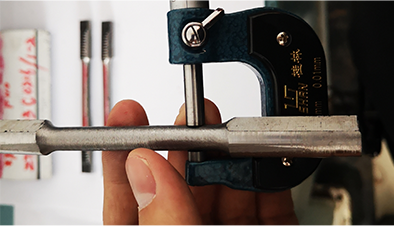- Afrikaans
- Albanian
- Amharic
- Arabic
- Armenian
- Azerbaijani
- Basque
- Belarusian
- Bengali
- Bosnian
- Bulgarian
- Catalan
- Cebuano
- Corsican
- Croatian
- Czech
- Danish
- Dutch
- English
- Esperanto
- Estonian
- Finnish
- French
- Frisian
- Galician
- Georgian
- German
- Greek
- Gujarati
- Haitian Creole
- hausa
- hawaiian
- Hebrew
- Hindi
- Miao
- Hungarian
- Icelandic
- igbo
- Indonesian
- irish
- Italian
- Japanese
- Javanese
- Kannada
- kazakh
- Khmer
- Rwandese
- Korean
- Kurdish
- Kyrgyz
- Lao
- Latin
- Latvian
- Lithuanian
- Luxembourgish
- Macedonian
- Malgashi
- Malay
- Malayalam
- Maltese
- Maori
- Marathi
- Mongolian
- Myanmar
- Nepali
- Norwegian
- Norwegian
- Occitan
- Pashto
- Persian
- Polish
- Portuguese
- Punjabi
- Romanian
- Russian
- Samoan
- Scottish Gaelic
- Serbian
- Sesotho
- Shona
- Sindhi
- Sinhala
- Slovak
- Slovenian
- Somali
- Spanish
- Sundanese
- Swahili
- Swedish
- Tagalog
- Tajik
- Tamil
- Tatar
- Telugu
- Thai
- Turkish
- Turkmen
- Ukrainian
- Urdu
- Uighur
- Uzbek
- Vietnamese
- Welsh
- Bantu
- Yiddish
- Yoruba
- Zulu
Overview of Bull Plug Wellhead Features and Applications in Oil and Gas Industry
Understanding Bull Plug Wellheads A Key Component in Oil and Gas Operations
In the ever-evolving world of oil and gas extraction, wellheads serve as critical components for ensuring the safe and efficient production of hydrocarbons. Among the various types of wellheads, the bull plug wellhead plays a significant role in controlling the pressure and flow from wells, while also ensuring safety and operability in challenging environments.
What is a Bull Plug Wellhead?
A bull plug wellhead is essentially a protective assembly that sits at the surface of an oil or gas well. It is designed to prevent the uncontrolled release of reservoir fluids and gases while providing access for drilling, completion, and maintenance activities. Its primary function involves managing high-pressure environments, and it is typically constructed from durable materials capable of withstanding extreme conditions, including harsh weather, high temperatures, and corrosive substances.
The bull plug itself serves as a barrier that plugs the well after drilling has taken place, ensuring that pressure is maintained within the wellbore until production begins. This is crucial not only for meeting regulatory safety standards but also for protecting the surrounding environment from potential leaks.
Components of a Bull Plug Wellhead
A typical bull plug wellhead consists of several key components. These include the casing head, tubing head, and a series of valves and fittings. The casing head connects the well casing to the wellhead assembly and is typically situated at the surface. The tubing head connects the production tubing to the wellhead and is designed to withstand high pressures while allowing for the easy installation of additional equipment.
The bull plug itself can be a simple mechanical plug or a more complex device that includes features such as pressure monitoring and automated release systems. The design ensures that operators can easily access the wellbore while maintaining control over well pressures.
bull plug wellhead

Installation and Maintenance
The installation of a bull plug wellhead requires precise engineering and adherence to safety protocols. Before installation, thorough assessments of the well and surrounding area must be conducted to determine the appropriate design and materials. During installation, specialized equipment such as blowout preventers (BOPs) may be employed to manage the pressures encountered.
Once installed, ongoing maintenance is vital for the longevity and efficacy of the bull plug wellhead. Regular inspections help identify any wear or degradation that could lead to dangerous situations. Operators must be vigilant about monitoring the pressure levels and ensuring all components are functioning correctly. Preventive maintenance practices include replacing seals, checking valve alignments, and ensuring that the bull plug is properly seated.
The Role in Safety and Environmental Protection
The bull plug wellhead plays a crucial role in ensuring both operational safety and environmental protection. By effectively managing subsurface pressures, the bull plug helps prevent blowouts, which can result in catastrophic accidents with significant environmental repercussions. Furthermore, it acts as a first line of defense against leaks that could contaminate soil and water sources.
As global standards for environmental protection in oil and gas operations become increasingly stringent, the importance of wellhead technologies, including the bull plug wellhead, cannot be overstated. Operators are continually looking for ways to enhance safety protocols and reduce their environmental footprint.
Conclusion
In summary, the bull plug wellhead is an indispensable component of oil and gas operations, providing essential safety measures and control for well pressures throughout the lifecycle of a well. As technology advances, we can expect to see further innovations in wellhead design that will enhance safety, efficiency, and environmental protection. Understanding the intricacies of bull plug wellheads informs better practices in the industry and highlights the importance of engineering excellence in one of the world’s most challenging fields. The effective management of well pressures not only secures production but reinforces the industry's commitment to safety and environmental stewardship.
-
Tubing Pup Joints: Essential Components for Oil and Gas OperationsNewsJul.10,2025
-
Pup Joints: Essential Components for Reliable Drilling OperationsNewsJul.10,2025
-
Pipe Couplings: Connecting Your World EfficientlyNewsJul.10,2025
-
Mastering Oilfield Operations with Quality Tubing and CasingNewsJul.10,2025
-
High-Quality Casing Couplings for Every NeedNewsJul.10,2025
-
Boost Your Drilling Efficiency with Premium Crossover Tools & Seating NipplesNewsJul.10,2025







